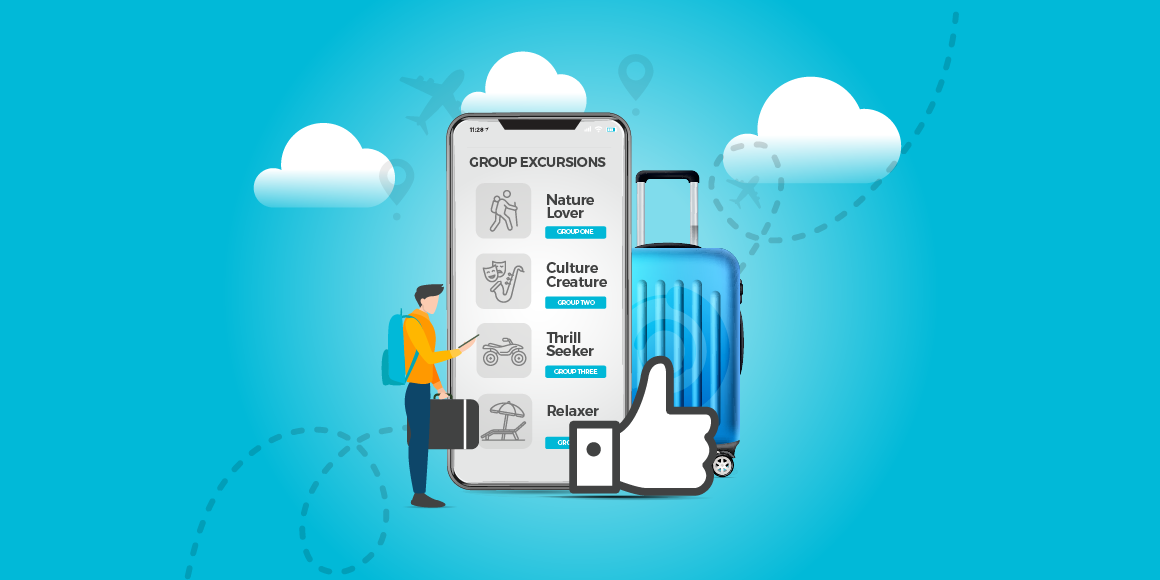According to a 2024 Incentive Travel Index report, corporate incentive travel continues to be viewed as a "strategic differentiator" among senior executives. Those in the c-suite also continue to see these incentive travel trips—particularly group travel—as a true source of competitive advantage and ultimate business performance.
However, whether you’re planning a travel incentive to spur customer loyalty, employee engagement, channel partner sales, or something else, it’s important to know who you should be planning for. Is your group comprised of young 30-somethings who are looking to cut loose and have a good time? Or are they made up of Gen-Xers who might appreciate an incentive trip that’s a little more relaxed?
In previous posts, we’ve discussed the importance of understanding your incentive program demographics, and how doing so can mean the difference between an incentive travel program that works, and one that falls flat.
Participant Demographics Are the Key
However, as leading companies look to provide more personalized rewards programs, having a clear understanding of participant demographics is increasingly a factor. This is true not just in deciding which destination to visit, but also in finding ways to tailor the travel experiences once your group has arrived.
After all, even amongst a fairly homogenous participant pool—where factors like age and income might be more or less equal—chances are that individuals within this group still won’t all necessarily share the same interests.
So how do you turn your incentive trips into a motivational tool? How do you make them exciting enough to motivate someone looking to step outside their comfort zone, while still appealing to the classic swim-up bar crowd who wants more of a leisure travel experience?
Should you simplify your travel incentive with some basic welcome and farewell receptions, and risk disappointing a chunk of your crowd? Should you stay in the United States or North America? Or should you break the bank by going somewhere abroad, offering spectacular excursions but likely sacrifice some of your precious ROI?
The Happy Medium
Maybe there’s a happy medium for successful incentive travel programs. A great way is to categorize participants into interest sub-groups, identifying a few common “personas” that participants would likely identify with. These personas could then be matched with an unforgettable experience or two that would appeal to this persona. And these experiences could be arranged in advance with the local Destination Management Company (DMC).
With these “selective” excursions, a client could introduce an organized element of personalization to their travel incentives. What's more, they could do this without having to cater to each individual preference, or expecting participants themselves to pay out of pocket for the excursions. To get an idea, some possible personas might include:
The Nature Lover
The Nature Lover is a fan of all things outdoors.
Whether in the jungle or the woods, near the ocean or the mountains, this person’s “happy place” is inevitably somewhere in nature. Only a storm can keep the Nature Lover inside—and even then, chances are they’ll be fascinated by the weather! They’re sure to enjoy anything involving wildlife, such as swimming with dolphins or witnessing the hatching of sea turtles, and are equally comfortable zip lining through the rainforest and taking a relaxing walk through the local botanical gardens.
The Culture Creature
With a thirst for the new, the Culture Creature seeks to soak up everything about their destination.
This person loves experiencing the local culture through its history, art, food, and community. With their varied interests you may find the Culture Creature exploring a nearby temple, taking part in a guided walking tour or learning to make the local cuisine in a cooking class.
They’re always looking to expand their cultural horizons, and whenever they visit a place, they pride themselves on being more than just a tourist.
The Thrill-Seeker
If it gets the adrenaline pumping, count the Thrill-Seeker in!
This person lives for excitement—the higher, faster, and more dangerous, the better. The Thrill-Seeker’s not afraid to try something outside of their comfort zone, whether it’s high-stakes gambling, swimming with sharks, driving an ATV, or learning to kite surf. “You only live once” might be this person’s motto, and it’s the reason they’re always on the lookout for the next great adventure.
The Relaxer
You know where you can find The Relaxer: out by the pool or lounging in a cabana on the beach, soaking up sunshine with a refreshing tropical cocktail in hand.
The Relaxer is someone who knows the meaning of the word “vacation,” and wants nothing more than to shed the stress of the daily grind and simply unwind. This person may book a massage or two during their stay, and could just as easily find themselves enjoying an afternoon out on a rented sailboat or catamaran.
Room service? For The Relaxer, the answer is usually “Yes please.”
Conclusion
If you can determine two or three of these “personas” that fit best with your overall group demographics, you can then offer the destination preference and selective group excursions that would appeal to—and thus motivate—those participants who identify with them. This is what can separate so-so incentive programs from a truly successful incentive trip.
By providing personalized options which participants can choose for themselves, you stand to create a more memorable incentive travel experience for each and every individual. After all, they’ve earned it.






